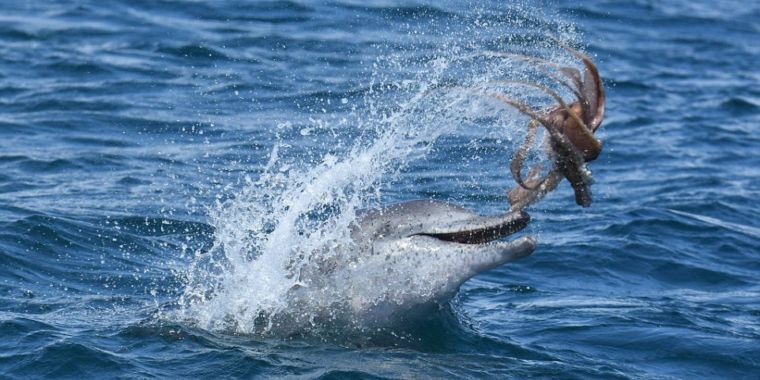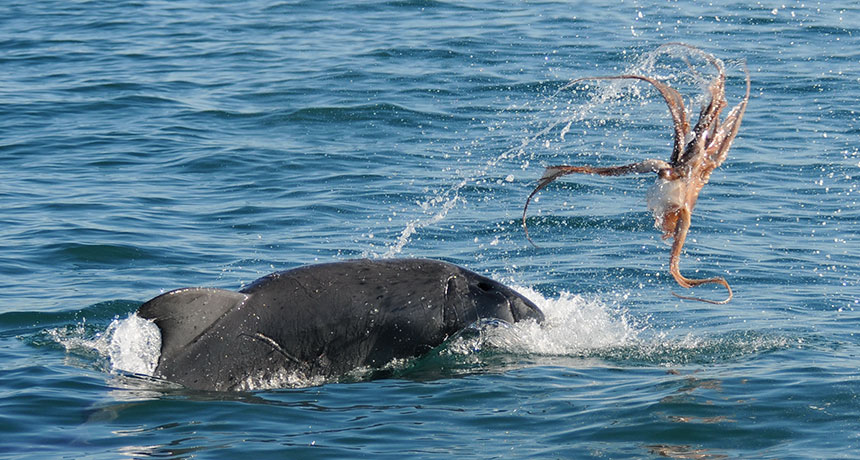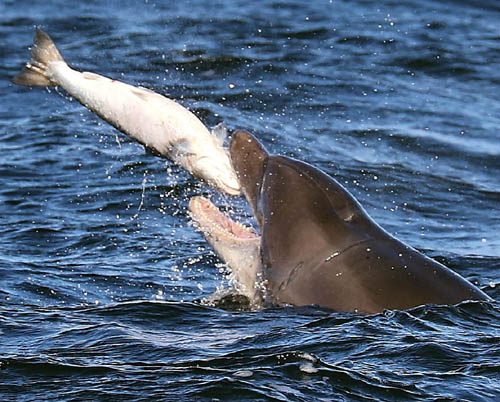
Orcas have made a name for themselves as master food flingers, but a video from Florida shows that their much smaller cousins also have a knack for flipping prey to new heights.

The footage was captured by videographer Richard Kern in Florida Bay, where sizeable tarpon have been gathering in large numbers to gorge on shrimp. Several different explanations have been suggested for why dolphins toss food in this way, and the behaviour doesn’t seem to be geographically limited.

Back in 2013, a South Carolina resident viewed a similar flinging display from a local dock:
It’s possible that fish-throwing is simply a “fun” activity for these intelligent cetaceans. Others speculate that younger individuals engage in such solo games of catch in order to practice their hunting skills. Both of these explanations are also floated when killer whales – the largest of the oceanic dolphins – display the behaviour.

Whale and Dolphin Conservation field officer Charlie Phillips offers another interesting possibility, based on his work with dolphins in northeast Scotland. Pods in the region readily feast on large fish like salmon, and Phillips suspects size is a factor in the prey-flinging trend.
“I often get asked why dolphins sometimes throw salmon around,” he says. “And people wonder if they are ‘playing’ with the fish. Dolphins need to feel that the fish they are trying to swallow fit properly and comfortably down the throat without hindrance or obstacles. Otherwise the fish could become jammed or lodged.”

Phillips notes that some individuals “eject” fish more frequently than others. One female, nicknamed “Zephyr” by local researchers, is known to be a particularly fussy eater and has been seen throwing fish close to ten times before finally gulping them down.
WATCH: Pilot whale chokes when a fish ‘swims’ out of its blowhole
“A lot of smaller fish that dolphins catch are swallowed quickly underwater,” says Phillips. “It’s only the bigger prey that we tend to see getting this sort of treatment.” Dolphin behaviour specialist Justin Gregg adds that the action can also help tenderise prey, or break it into more manageable chunks.

This could explain why Florida’s dolphins sometimes toss the tarpon: the impressive fish can grow to over two metres (8ft) and weigh as much as 127 kilograms (280lbs). But as with most complex animal behaviours, there is probably a combination of factors at work here. Interestingly, river dolphins in the Amazon Basin also deploy the tossing tactic, but with small fishes.
Food-throwing behaviour, then, likely has different motivations in different contexts: some cases may be play, some may be training, still others may be mealtime safety drills.

“It could [also] be a display meant to intimidate other dolphins,” says Gregg. “There is evidence that some species carry sticks or other objects around to, potentially, intimidate rivals.”
Gregg suspects the dolphin in Kern’s footage is merely entertaining itself, but whatever the explanation, the sighting is a good sign in a part of Florida that’s been plagued by seagrass die-offs, toxic algal blooms, unusually warm waters and high sulphur levels in recent years. The Miami Herald reports that Hurricane Irma, may have brought some unforeseen ecological benefits for the marine life of Florida Bay.
According to Florida International University marine ecologist Jim Fourqurean, some scientists believe the storm’s battering may have helped to inject new life into an ecosystem that “suffers from too little circulation”.
“A big hurricane that causes a big displacement of water could be good because it will freshen up the bay,” Fourqurean told The Miami Herald.
Weeks after the hurricane, high numbers of both dolphins and tarponwere seen hunting near rafts of seagrass churned up by the storm. Big swells can cause nutrients to be swept up from the seabed; this in turn allows smaller inhabitants like shrimp to thrive, which then draws in larger animals like tarpon – and fish-flinging dolphins.
